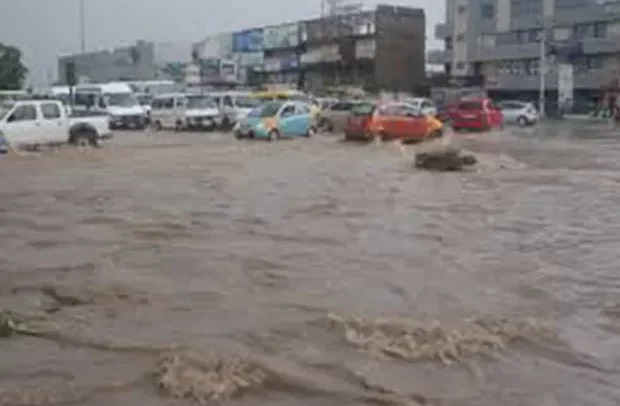Each year, as the rains beacon, Accra’s residents brace themselves for the inevitable aftermath of heavy rains and gusty winds.
Collapsed buildings, uprooted trees, and flooded streets are but a few of the visible trails of destruction and loss the season leaves. Despite ongoing efforts, the city seems unprepared for the recurring disasters.
Accra, Ghana’s bustling capital, has long been plagued by serve weather events. The recent incident near the Italian Embassy, where a tree fell on both a motorbike and several vehicles, critically injuring one individual, is a stark reminder of the city’s vulnerability.
Inadequate infrastructure, poor urban planning, and the effects of climate change combine to create a perfect storm of conditions that put lives and properties at risk anytime it rains.
Urban planning in Accra has struggled to keep pace with the city’s rapid growth. Many areas lack proper drainage systems, leading to frequent flooding. Buildings are often constructed without adherence to safety regulation, increasing their susceptibility to collapse.
With observations, this torn in the flesh is worsened by environmental degradation. Deforestation and poor land management practices exacerbate the city’s vulnerability. Trees that once provided stability and reduced wind impact are being lost, leaving the urban landscape more exposed.
Climate change is also a contributing factor to this problem. Climate change is intensifying weather patterns, making heavy rains and strong winds more common and severe. The city’s infrastructure, already under strain, is not equipped to handle these extreme conditions.
Efforts by the Accra Metropolitan Assembly, AMA, and the National Disaster Management Organisation, NADMO, have yielded little results in addressing the root causes of these problems. While emergency responses are often swift, long-term solutions are lacking. Interviews with officials reveal a need for greater investment in infrastructure and stricter enforcement of building codes.
In recent years, heavy rains and winds have caused significant damage in Accra. According to reports from local news agencies, the June 2015 floods alone resulted in over $100 million in damages and claimed around 150 lives. More recently, in April 2021, severe weather led to widespread property damage, injuries, and displacement of residents.
These recurring incidents highlight the urgent need for improved urban planning and infrastructure to mitigate the impact of such events.
Residents of Adabraka, Kasoa, Circle and Teshie recount stories of repeated flooding and loss of property.
“Every time it rains heavily, we fear for our homes and our lives,” says Kwame Asante, a local shop owner. These personal accounts highlight the human cost of inadequate urban planning and environmental management.
Urban planners and environmental experts agree that comprehensive planning and sustainable practices are crucial. According to research, experts from organisations such as The Nature Conservancy and the World Economic Forum have emphasised the need for a holistic approach that includes better infrastructure, reforestation, and stricter building regulations to reduce the impact of severe weather events.
The recurring disasters caused by heavy rains and winds in Accra are symptoms of deeper systemic issues. Addressing these challenges require a coordinated effort between government agencies, urban planners, and the community. Without significant changes, the people of Accra will continue to face the devastating consequences of severe weather.
By William-Mensah Gifty, GIJ


